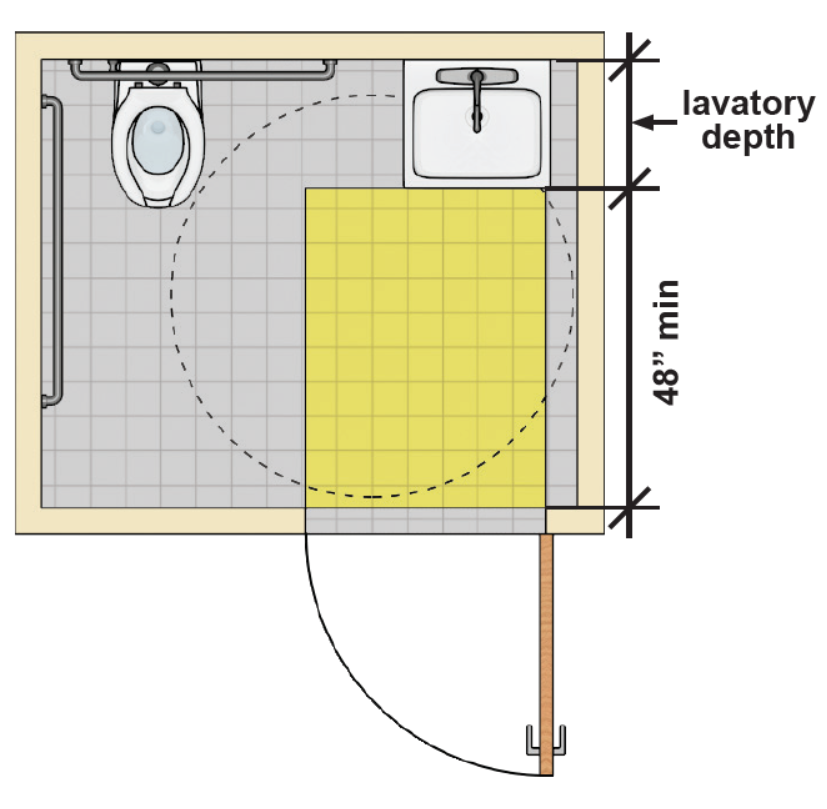


They can be designed and installed to adhere to every ADA compliance specification. Source: When it comes to ADA compliance for bathroom floors, epoxy floor and wall systems are the clear choice. These specifications apply to all portions of accessible routes, including thresholds. Changes in level above ½ inch must be treated as a ramp or curb ramp. Changes in level can be up to ¼ inch without treatment or ½ inch if beveled with a slope no steeper than 1:2.

The ADA also has regulations relating to changes in level in flooring. While both vinyl and tile flooring meets qualifications for stability and firmness, epoxy exceeds them both when it comes to slip resistance, as we discussed earlier. The ADA standards require that compliant bathrooms have floor and ground surfaces that are stable, firm and slip resistant. While there are numerous stipulations for ADA compliant bathrooms,we’ll be primarily focusing on requirements as they relate to flooring.

It also includes stipulations for grab bars and their placement. There are a number of requirements for ADA compliant bathrooms, most of which pertain to bathroom dimensions and layout: specifications for toilet height, sink height, mirror height and certain radii of movement from the door, toilet, sink, shower or tub, and any combination therein. As a facility manager, you can’t be expected to be an expert in everything the ADA requires, but you and your team’s compliance (or lack thereof) ultimately falls to you and could make the difference in whether or not issues are resolved with a fine or, worse, a lawsuit. Bathrooms can be particularly difficult to design in a way that meets ADA requirements because there are a lot of stipulations to meet in such a small space. Especially when catering to an aging population, it’s crucial that facilities be compliant with all ADA requirements, including those for bathrooms. Tubs, toilets, sinks and urinals all have their own set of ADA guidelines.Something that most assisted living facilities need to consider in their design is ADA accessibility. Grab bars and handrails must also be present, and they must meet guidelines for dimensions, strength and spacing. Additionally, the shower curb must not exceed half an inch, and the shower spray mechanism must be equipped with a 60 inch hose that enables fixed showerhead and handheld use. A good example is the shower-ADA compliance requires that roll-in showers (able to be used by someone in a wheelchair) have dimensions of at least 36 inches by 36 inches, and a seat installed along the entire length of the wall opposite the shower valve control. The most prevalent aspect of ADA compliance is measurement and spacing of various bathroom elements. However, there are many benefits to doing so, including potential use by aging family members, added resale value, and the fact that you'll be creating a space that can be used by anyone who visits your home, regardless of their range of abilities. If the bathroom you're designing will be in your home, you have no obligation to follow ADA code. The ADA is the Americans with Disabilities Act, and it attempts to ensure that persons with disabilities will have equal access to-and convenience in-public spaces, via a range of codes and recommendations. If you're installing a brand-new bathroom or redesigning an existing one, you should definitely consider the range of ADA-compliant bathroom layouts.


 0 kommentar(er)
0 kommentar(er)
